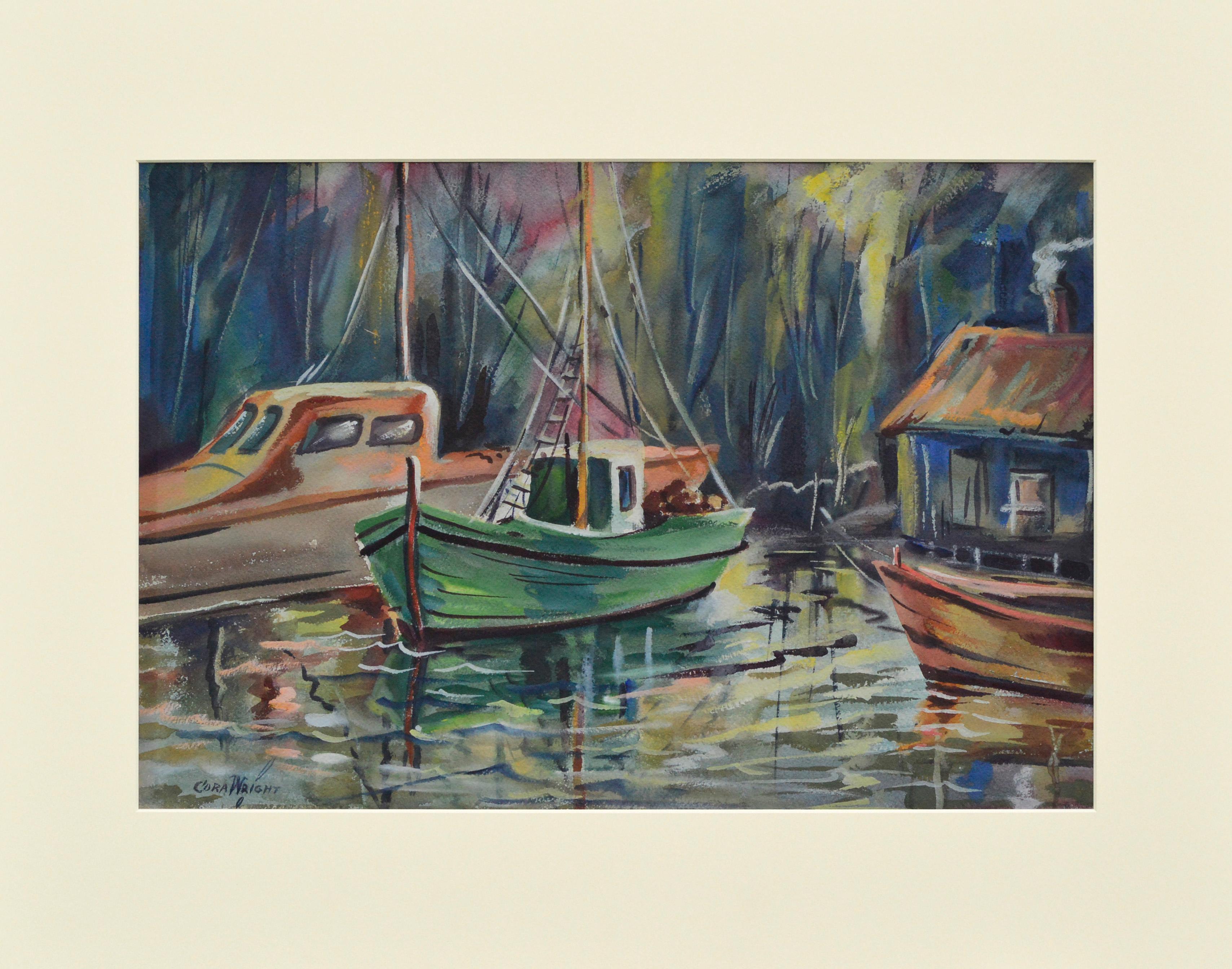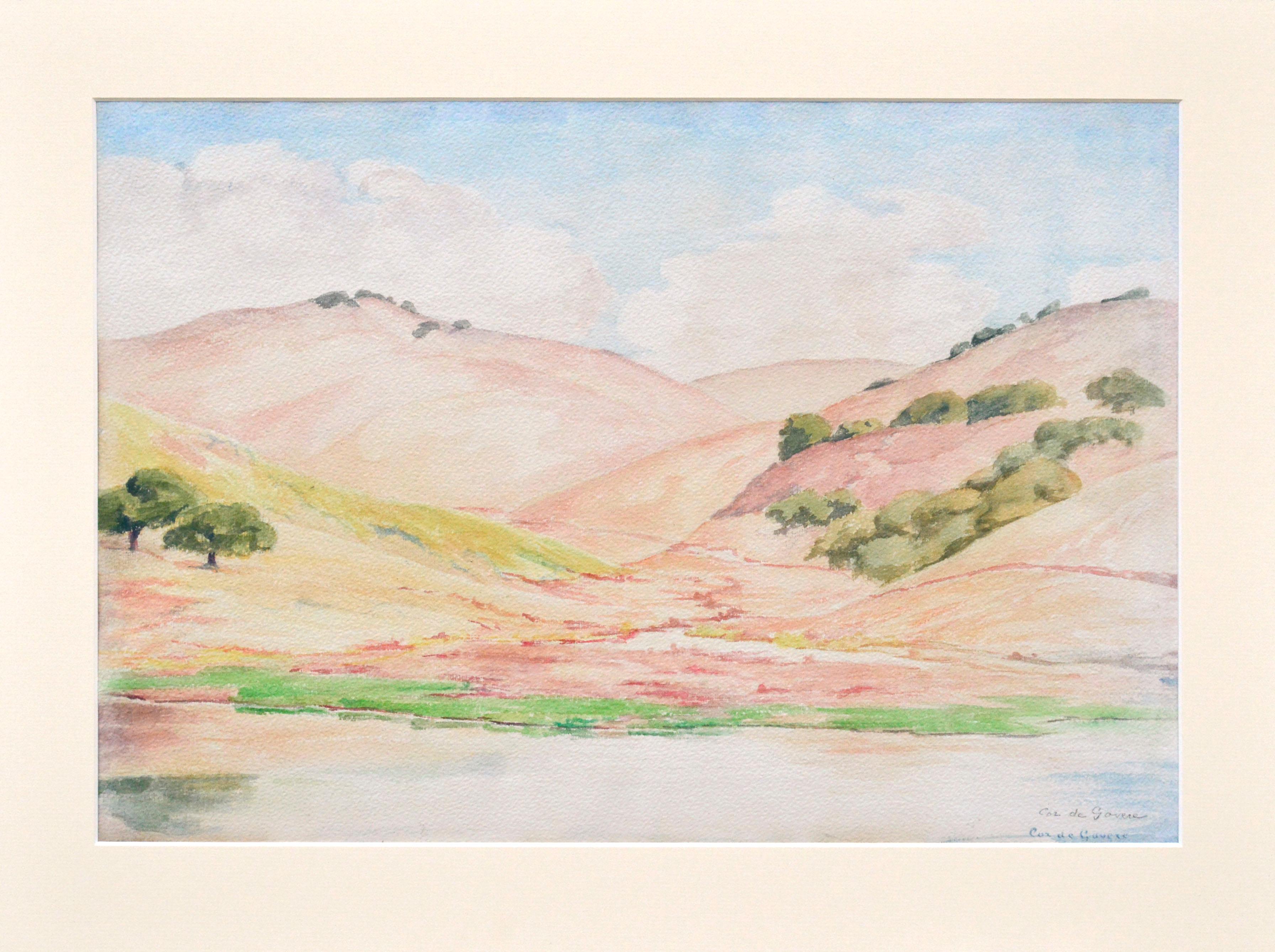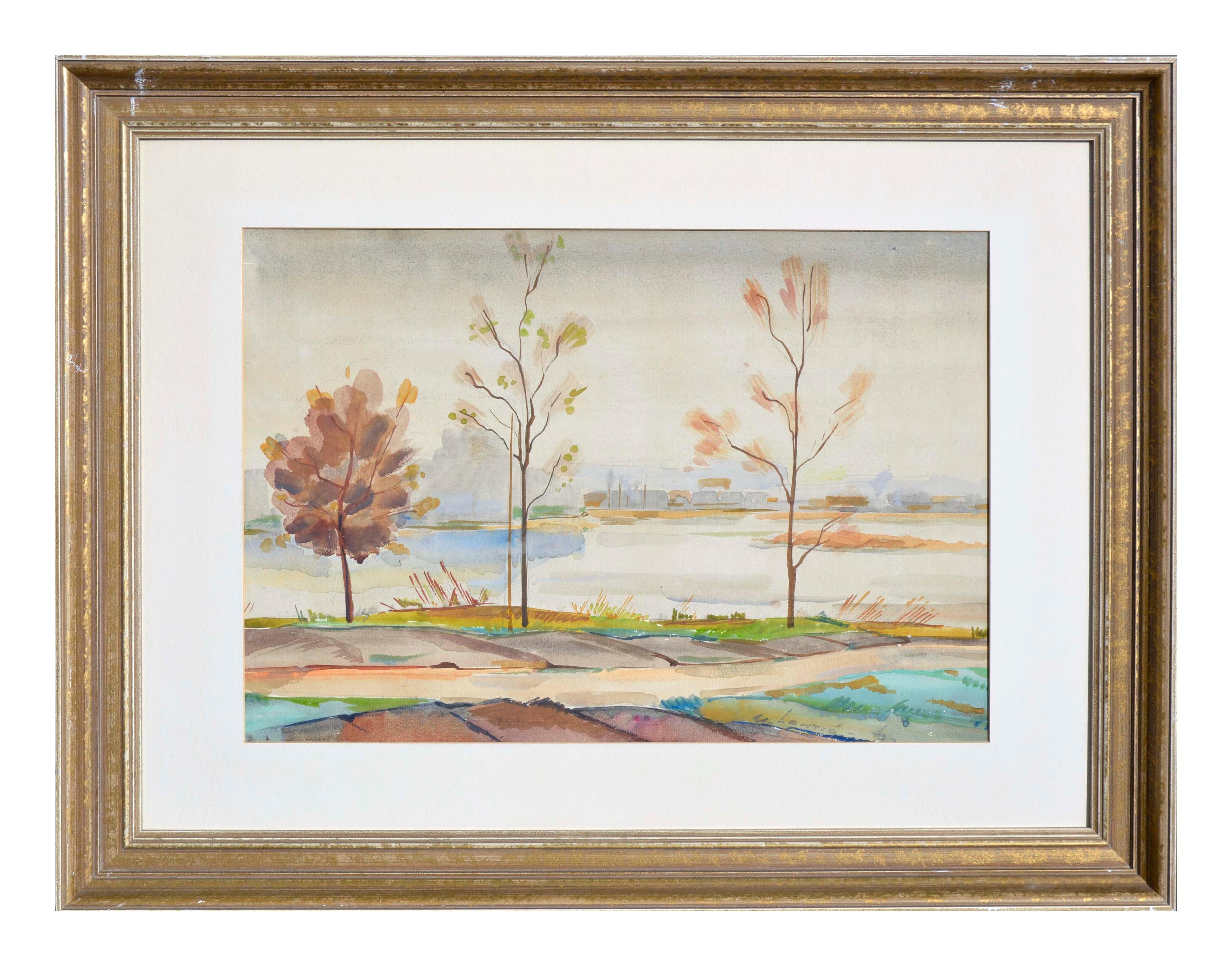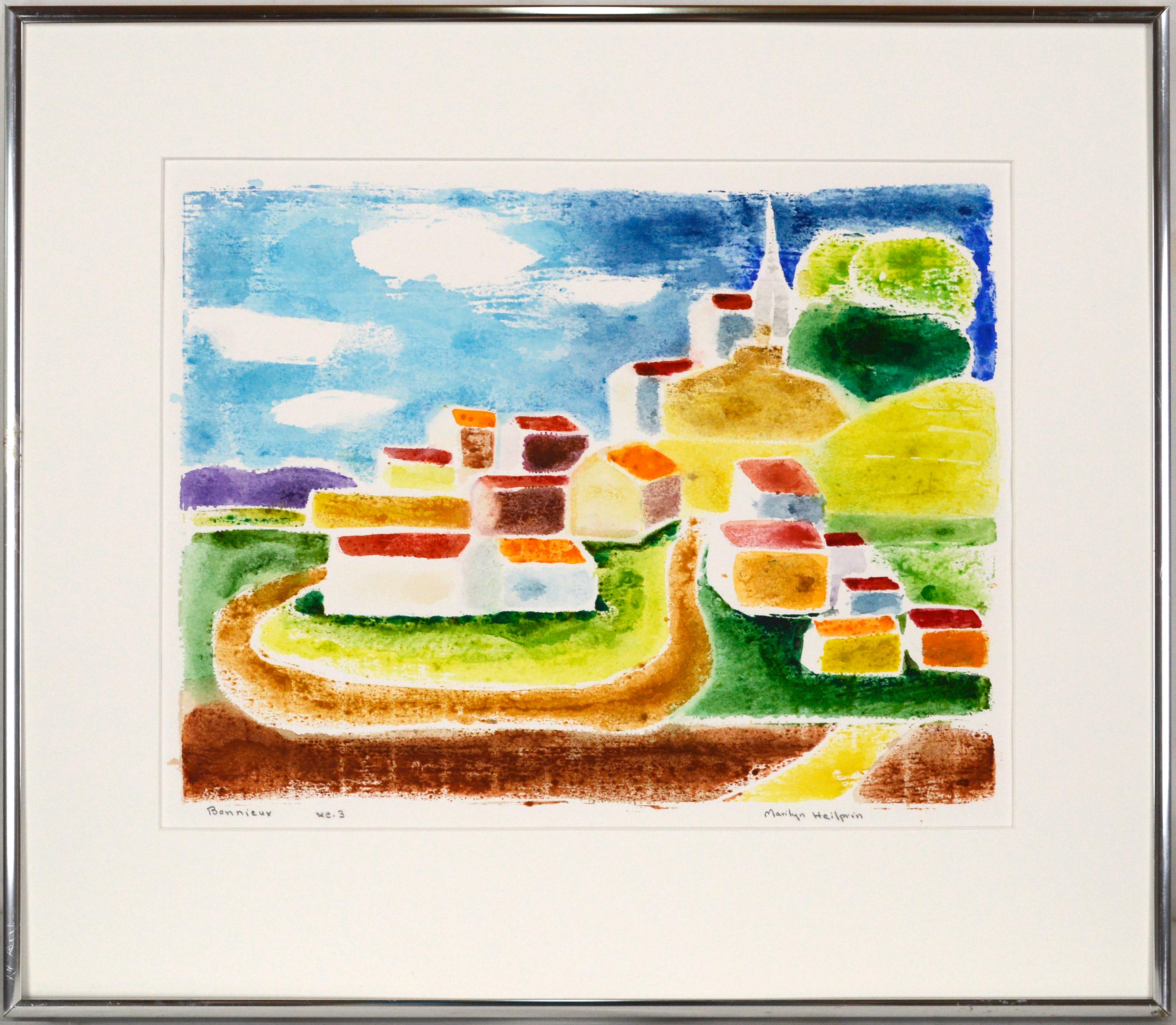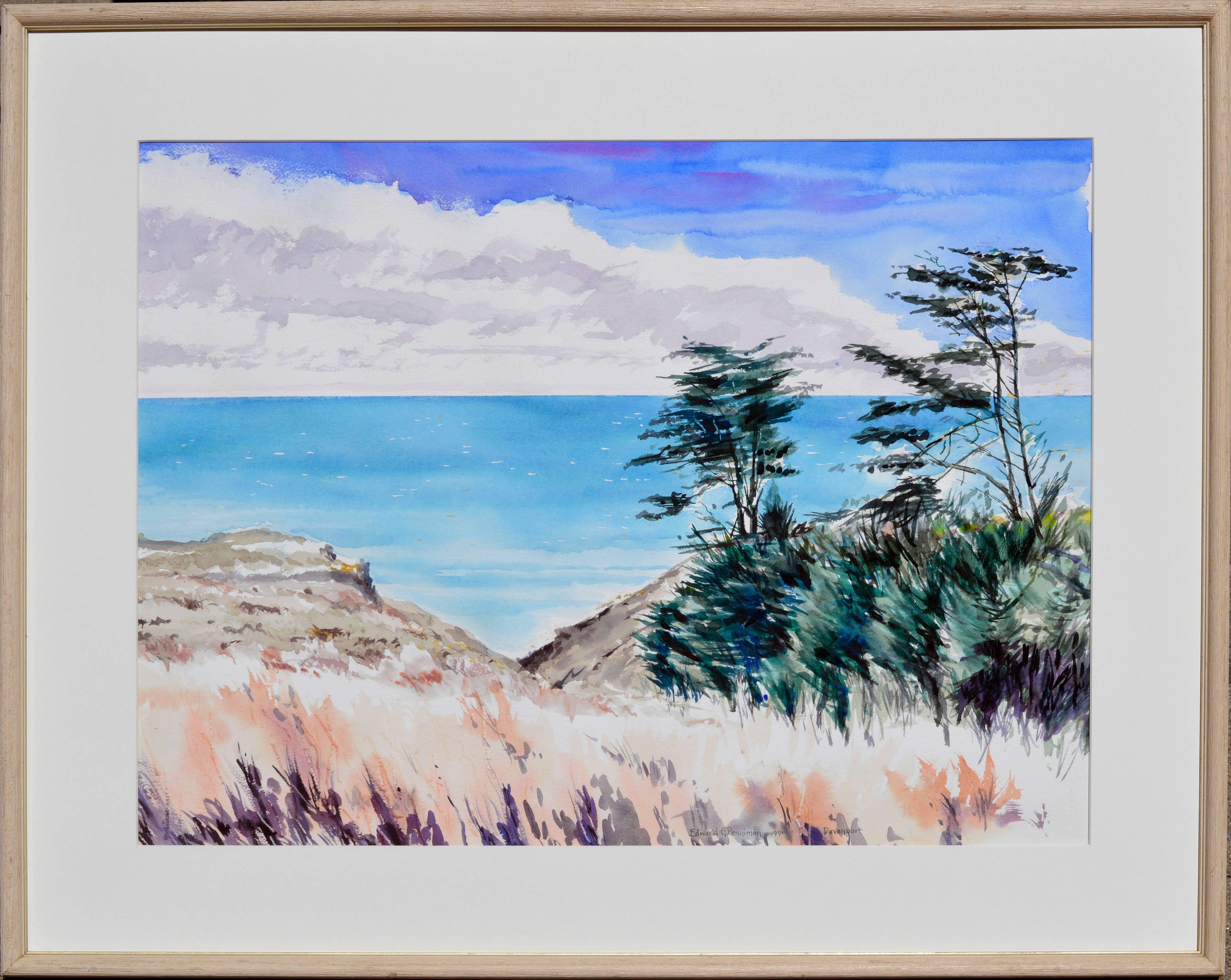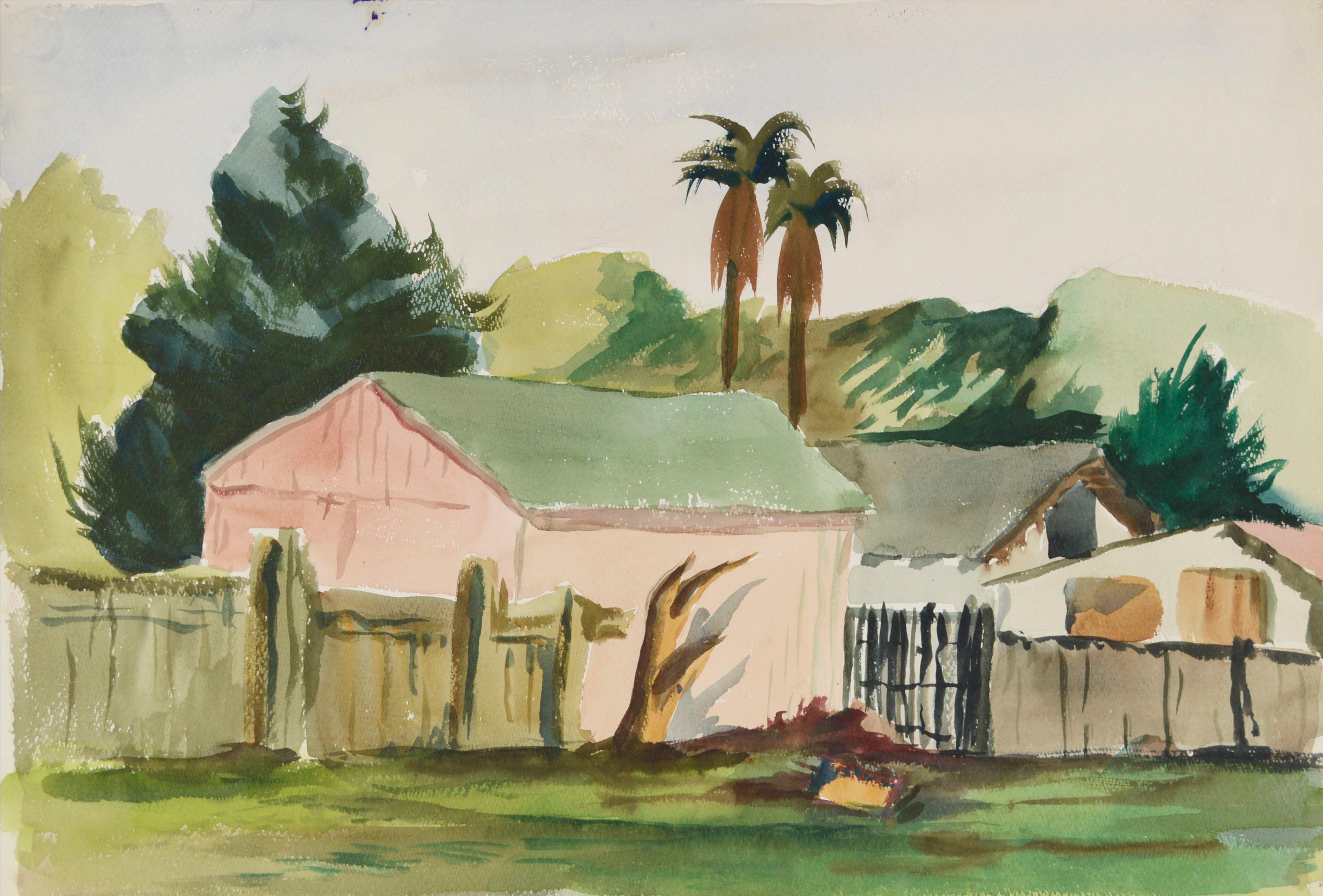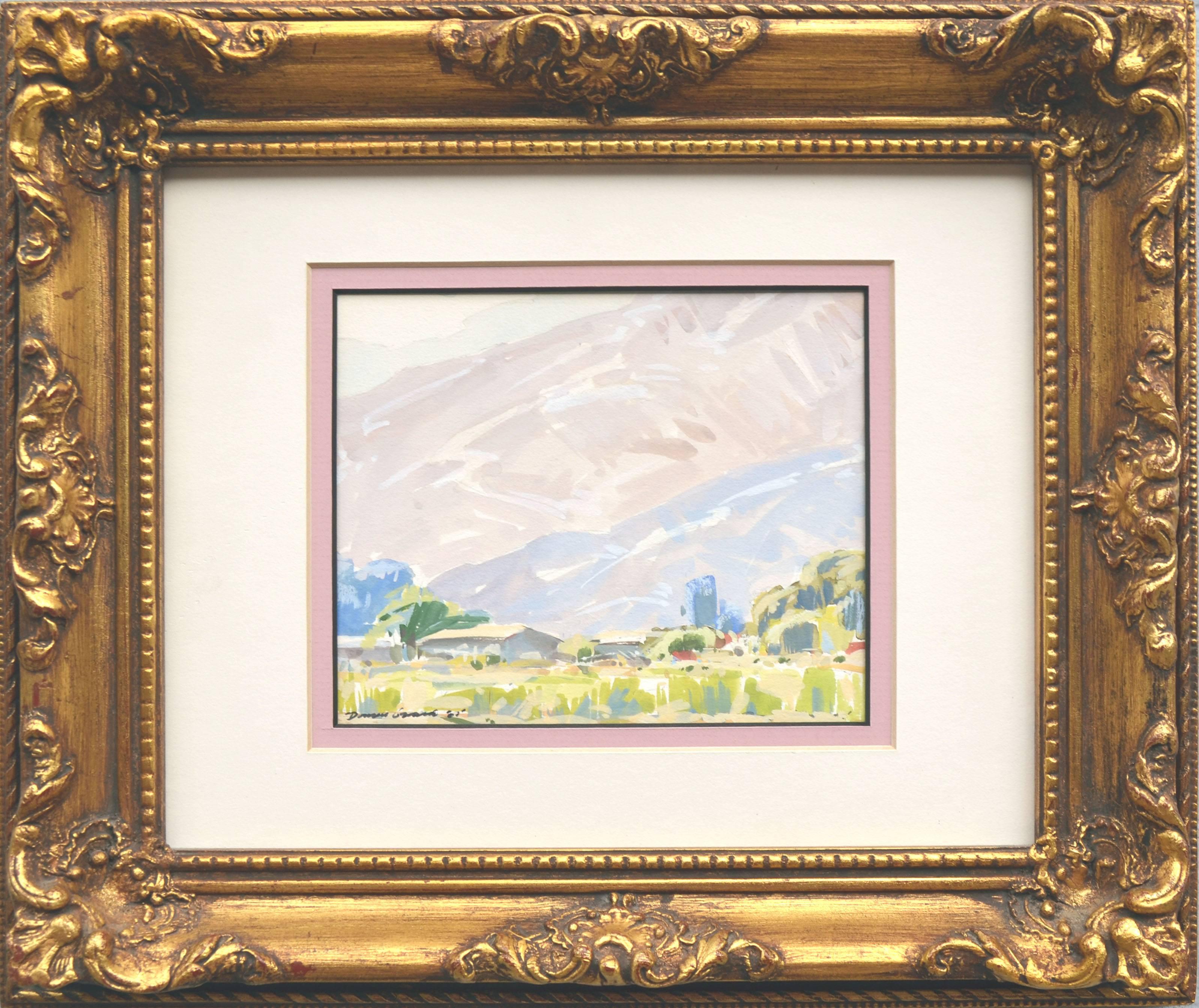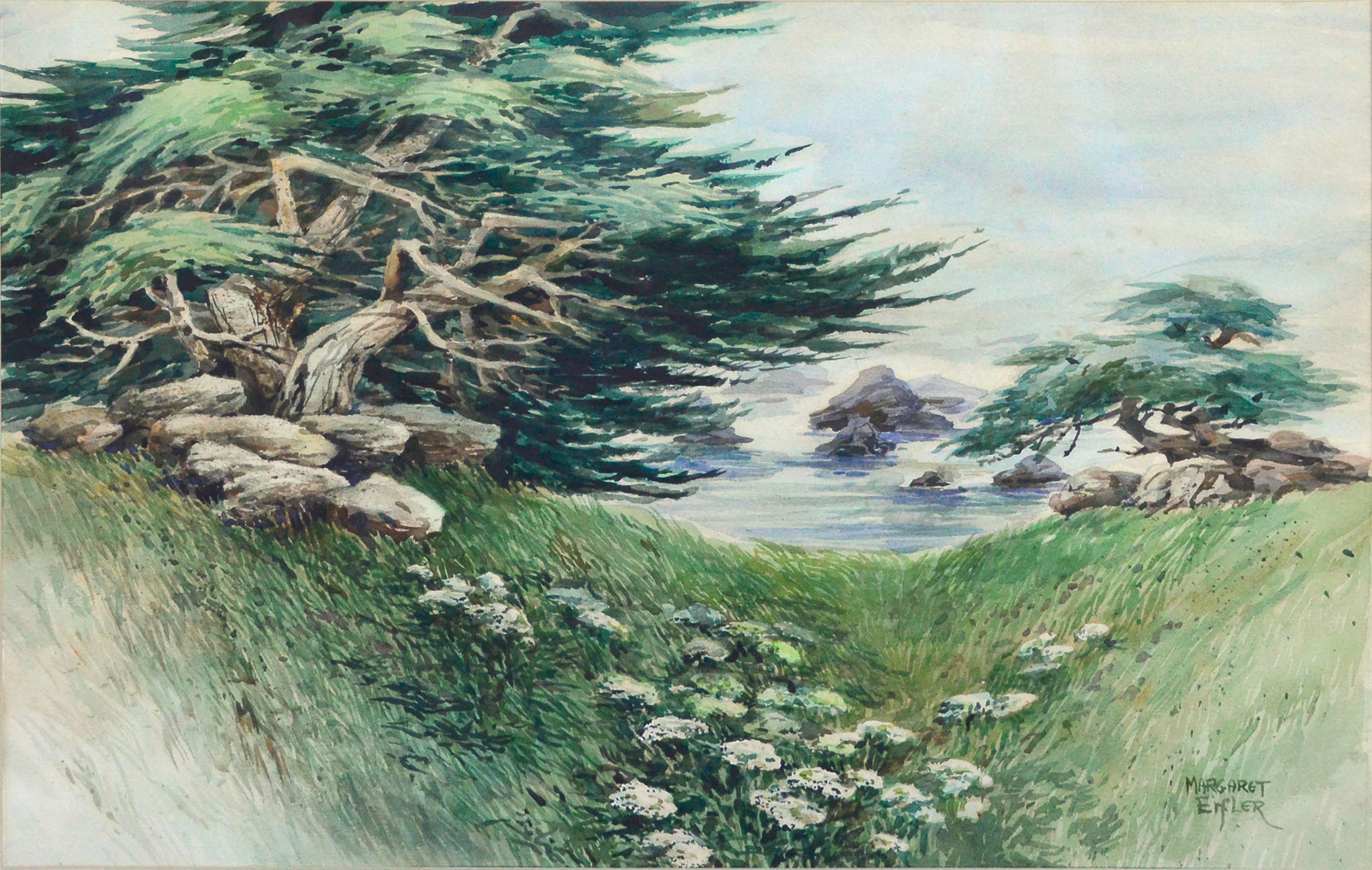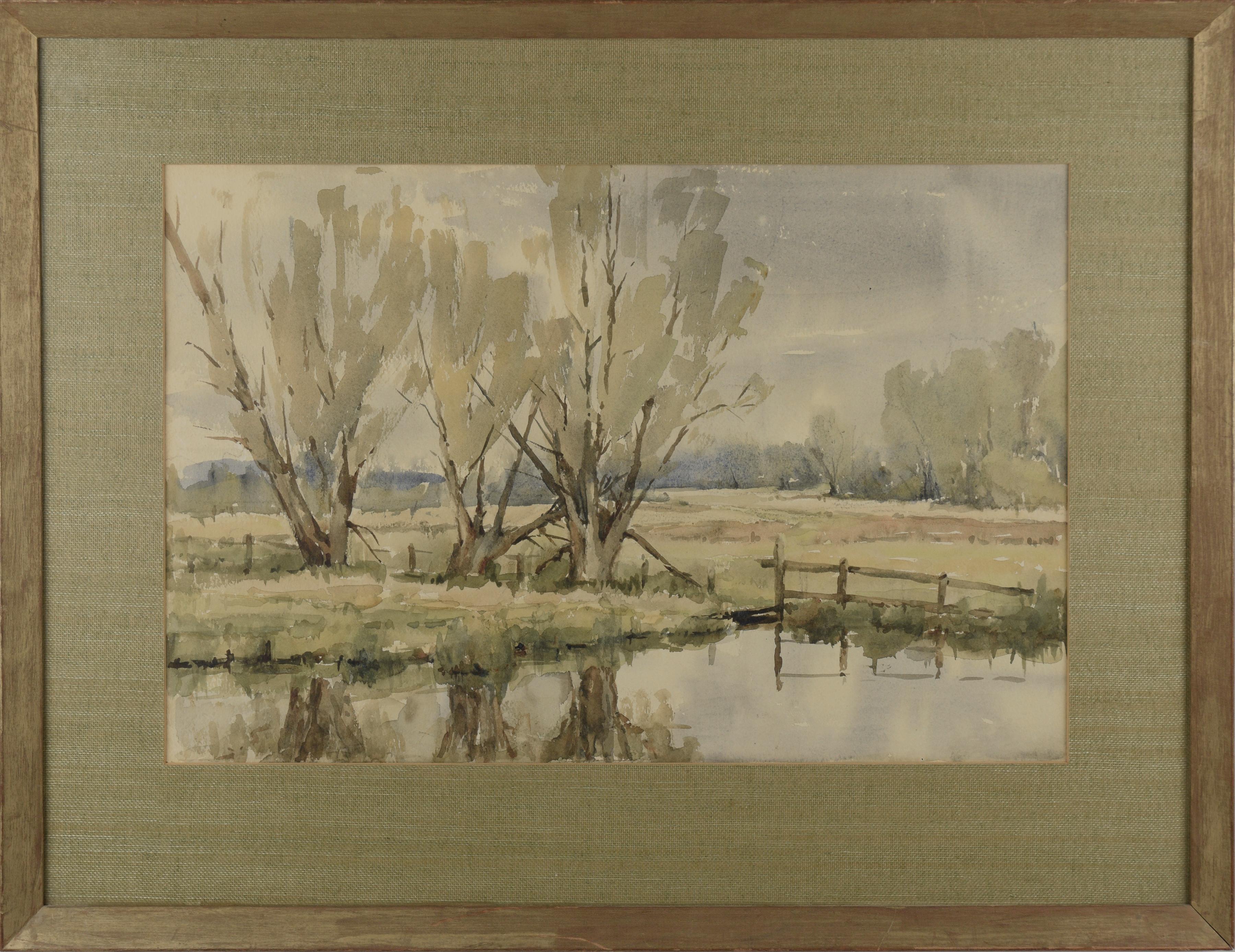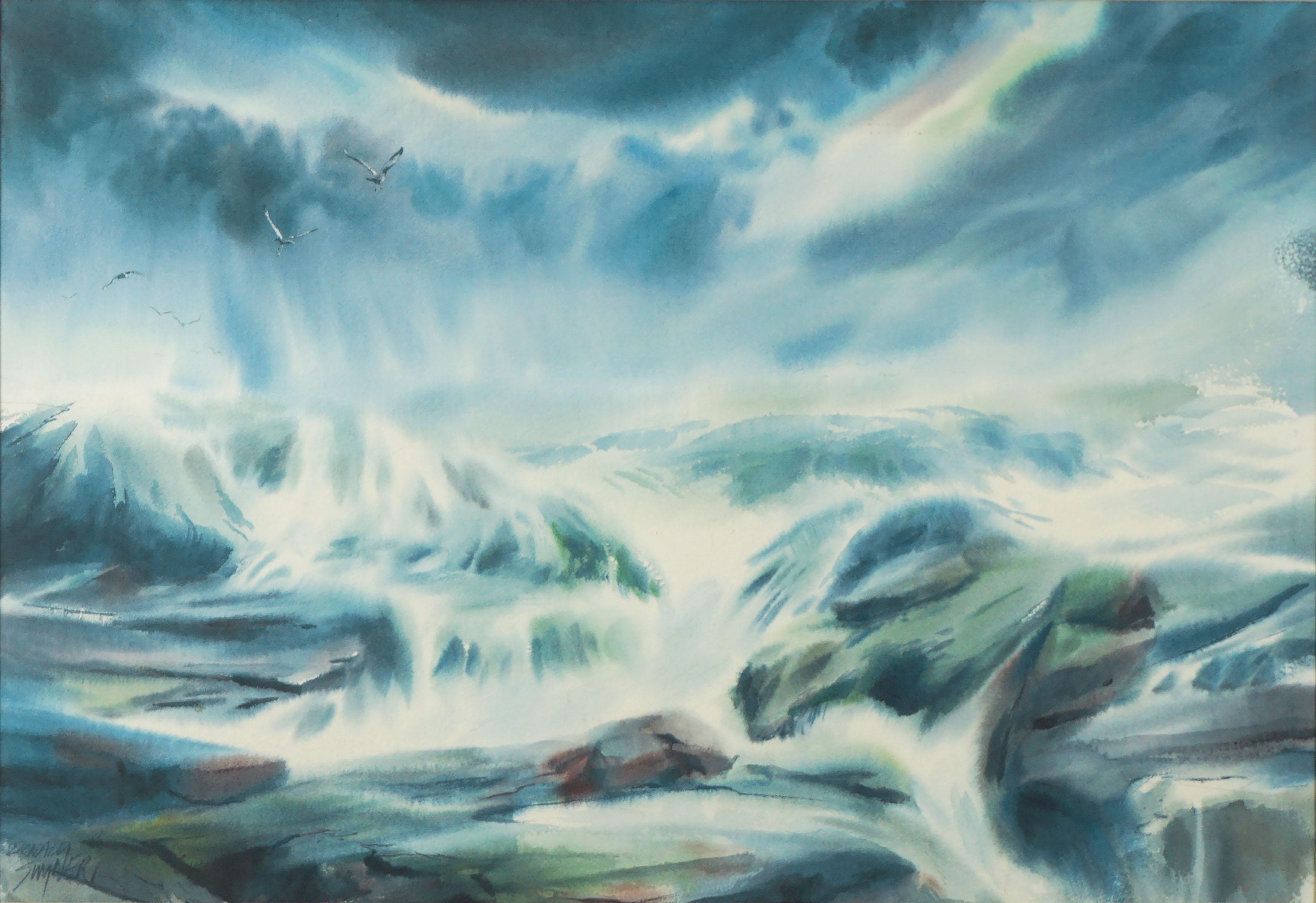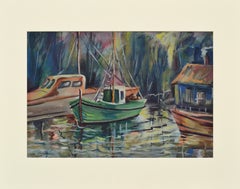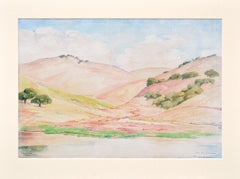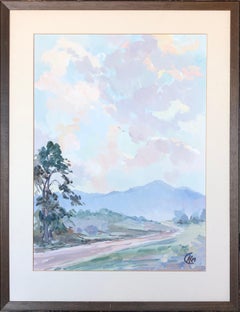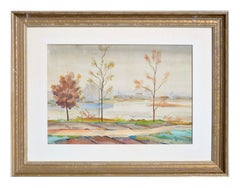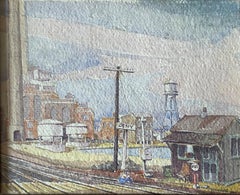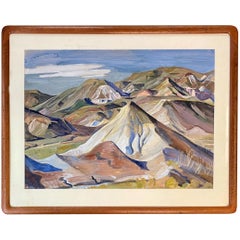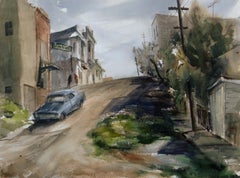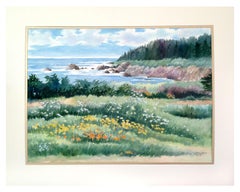
Summer Cove California Landscape
View Similar Items
Want more images or videos?
Request additional images or videos from the seller
1 of 8
Doris OlsenSummer Cove California Landscape1980s
1980s
About the Item
- Creator:Doris Olsen
- Creation Year:1980s
- Dimensions:Height: 31 in (78.74 cm)Width: 39 in (99.06 cm)Depth: 1 in (2.54 cm)
- Medium:
- Movement & Style:
- Period:
- Condition:
- Gallery Location:Soquel, CA
- Reference Number:Seller: D20691stDibs: LU5425039842
About the Seller
5.0
Platinum Seller
Premium sellers with a 4.7+ rating and 24-hour response times
Established in 1986
1stDibs seller since 2014
2,873 sales on 1stDibs
Authenticity Guarantee
In the unlikely event there’s an issue with an item’s authenticity, contact us within 1 year for a full refund. DetailsMoney-Back Guarantee
If your item is not as described, is damaged in transit, or does not arrive, contact us within 7 days for a full refund. Details24-Hour Cancellation
You have a 24-hour grace period in which to reconsider your purchase, with no questions asked.Vetted Professional Sellers
Our world-class sellers must adhere to strict standards for service and quality, maintaining the integrity of our listings.Price-Match Guarantee
If you find that a seller listed the same item for a lower price elsewhere, we’ll match it.Trusted Global Delivery
Our best-in-class carrier network provides specialized shipping options worldwide, including custom delivery.More From This Seller
View AllMid Century Fishing Boats Landscape
Located in Soquel, CA
Vibrant watercolor of three fishing boats by Cora Alice Akers Wright (American, 1908-1992). which are anchored in a small body of water. Signed...
Category
Early 20th Century American Impressionist Landscape Paintings
Materials
Watercolor, Laid Paper
$636 Sale Price
20% Off
Aromas California Pink and Gold Hills Landscape by Cor de Gavere Jolly Daubers
By Cor de Gavere
Located in Soquel, CA
Vibrant California landscape consisting of pink and gold rolling hills, oak trees, and a body of water in the foreground. Signed twice, by the artist in the lower right corner, once ...
Category
Early 20th Century American Impressionist Landscape Paintings
Materials
Watercolor, Laid Paper
Mid Century Tonalist Landscape of California Country Road
Located in Soquel, CA
Beautiful tonalist landscape of California foothills and country road. Signed and dated "CKP" and "'69" lower right corner. Presented in rustic wood frame with eggshell mat under nonglare glass. Image size: 18.25"H x 13.25"W. Framed size: 23.5"H x 18"W.
California Tonalism was art movement that existed in California from circa 1890 to 1920. Tonalist are usually intimate works, painted with a limited palette. Tonalist paintings are softly expressive, suggestive rather than detailed, often depicting the landscape at twilight or evening, when there is an absence of contrast. Tonalist paintings could also be figurative, but in them, the figure was usually out of doors or in an interior in a low-key setting with little detail.
Tonalism had its origins in the works of the French Barbizon school and in the works of American painters who were influenced by them. California Tonalism was born when the emphasis in California landscape painting passed from the grand landscapes of works like those of Thomas Hill and William Keith's early career, to more intimate views of a domesticated landscape. At the same time, the parallel Pictorialist Photography...
Category
1960s American Impressionist Landscape Paintings
Materials
Laid Paper, Gouache
Minimalist Mid Century Modern Landscape -- Autumn Trees
Located in Soquel, CA
Minimalist mid-century modern landscape of three autumnal trees by M. Lehtio (American, 20th century). Signed "M. Lehtio" and dated "48." Presented in a wood frame and non-glare glas...
Category
1940s American Impressionist Landscape Paintings
Materials
Watercolor, Laid Paper
Bonnieux Village Luberon France
Located in Soquel, CA
Bonnieux Village Luberon France
Bright and expressive white line woodcut in watercolor of Bonnieux Village Luberon France by Marilyn Heyman Marilyn H. Heilprin, (American, 1926-2020). Heilprin is an author, poet and artist from Bethesda, Maryland. Signed lower right "Marilyn Heilprin, titled lower left "Bonnieux WC 3 (watercolor #3).
Marilyn Heilprin was born in New York City and has a B.A. from Smith College (1948) and M.A. in international relations from The American University (1963). A former research associate, writer and editor for federal agencies and private publishers, she attended writing workshops at Breadloaf, The American University, and Writers' Center in Bethesda, MD. She has published poems in literary journals and was a finalist in the Maryland State Poetry and Literary Society chapbook contests. She co-authored Leo Saal's memoir "Crossings: A Life in Russia and Germany in the First Half of the 20th Century." Feb. 2020, Marilyn Heilprin, 93, a retired editor, writer and researcher who created one of the earliest compendiums of international statistics and organizations.
Image, 9"H x 12"W
Sheet, 14.5"H x 16.5"W
Frame, 15.25"H 17"W x .5"D
Mrs. Heilprin, a former resident of Bethesda, Md., was born Marilyn Heyman in New York City. In the 1950s, she was a researcher and writer on handbooks about Mongolia, Finland, Germany, Austria, Lebanon, Syria and Israel for the Washington-area branch of the Human Relations Area Files, a nonprofit formed by several universities. The "Provincetown Print", a white-line woodcut print. Rather than creating separate woodblocks for each color, one block was made and painted. Small groves between the elements of the design created the white line. Because the artists often used soft colors, they sometimes have the appearance of a watercolor painting.
Marilyn Heilprin, Ruth Cahnmann, George Chung, Susana deQuadros, Susan Due Pearcy, Leo Saal and Ann Zahn...
Category
Early 2000s American Impressionist Landscape Paintings
Materials
Watercolor, Laid Paper, Woodcut
$600 Sale Price
20% Off
Davenport, California Seascape
By Edward Penniman
Located in Soquel, CA
Gorgeous large scale watercolor seascape of an ocean view in Davenport, California by Edward Penniman (American, b. 1942). Signed and dated "Edward G. Penniman 1991" and titled "Dave...
Category
1990s American Impressionist Landscape Paintings
Materials
Watercolor, Laid Paper
$1,116 Sale Price
20% Off
You May Also Like
"Train Station, " Max Kuehne, Industrial City Scene, American Impressionism
By Max Kuehne
Located in New York, NY
Max Kuehne (1880 - 1968)
Train Station, circa 1910
Watercolor on paper
8 1/4 x 10 1/4 inches
Signed lower right
Provenance:
Private Collection, Illinois
Max Kuehne was born in Halle, Germany on November 7, 1880. During his adolescence the family immigrated to America and settled in Flushing, New York. As a young man, Max was active in rowing events, bicycle racing, swimming and sailing. After experimenting with various occupations, Kuehne decided to study art, which led him to William Merritt Chase's famous school in New York; he was trained by Chase himself, then by Kenneth Hayes Miller. Chase was at the peak of his career, and his portraits were especially in demand. Kuehne would have profited from Chase's invaluable lessons in technique, as well as his inspirational personality. Miller, only four years older than Kuehne, was another of the many artists to benefit from Chase's teachings. Even though Miller still would have been under the spell of Chase upon Kuehne's arrival, he was already experimenting with an aestheticism that went beyond Chase's realism and virtuosity of the brush. Later Miller developed a style dependent upon volumetric figures that recall Italian Renaissance prototypes.
Kuehne moved from Miller to Robert Henri in 1909. Rockwell Kent, who also studied under Chase, Miller, and Henri, expressed what he felt were their respective contributions: "As Chase had taught us to use our eyes, and Henri to enlist our hearts, Miller called on us to use our heads." (Rockwell Kent, It's Me O Lord: The Autobiography of Rockwell Kent. New York: Dodd, Mead and Co., 1955, p. 83). Henri prompted Kuehne to search out the unvarnished realities of urban living; a notable portion of Henri's stylistic formula was incorporated into his work.
Having received such a thorough foundation in art, Kuehne spent a year in Europe's major art museums to study techniques of the old masters. His son Richard named Ernest Lawson as one of Max Kuehne's European traveling companions. In 1911 Kuehne moved to New York where he maintained a studio and painted everyday scenes around him, using the rather Manet-like, dark palette of Henri.
A trip to Gloucester during the following summer engendered a brighter palette. In the words of Gallatin (1924, p. 60), during that summer Kuehne "executed some of his most successful pictures, paintings full of sunlight . . . revealing the fact that he was becoming a colorist of considerable distinction." Kuehne was away in England the year of the Armory Show (1913), where he worked on powerful, painterly seascapes on the rocky shores of Cornwall. Possibly inspired by Henri - who had discovered Madrid in 1900 then took classes there in 1906, 1908 and 1912 - Kuehne visited Spain in 1914; in all, he would spend three years there, maintaining a studio in Granada. He developed his own impressionism and a greater simplicity while in Spain, under the influence of the brilliant Mediterranean light. George Bellows convinced Kuehne to spend the summer of 1919 in Rockport, Maine (near Camden). The influence of Bellows was more than casual; he would have intensified Kuehne's commitment to paint life "in the raw" around him.
After another brief trip to Spain in 1920, Kuehne went to the other Rockport (Cape Ann, Massachusetts) where he was accepted as a member of the vigorous art colony, spearheaded by Aldro T. Hibbard. Rockport's picturesque ambiance fulfilled the needs of an artist-sailor: as a writer in the Gloucester Daily Times explained, "Max Kuehne came to Rockport to paint, but he stayed to sail." The 1920s was a boom decade for Cape Ann, as it was for the rest of the nation. Kuehne's studio in Rockport was formerly occupied by Jonas Lie.
Kuehne spent the summer of 1923 in Paris, where in July, André Breton started a brawl as the curtain went up on a play by his rival Tristan Tzara; the event signified the demise of the Dada movement. Kuehne could not relate to this avant-garde art but was apparently influenced by more traditional painters — the Fauves, Nabis, and painters such as Bonnard. Gallatin perceived a looser handling and more brilliant color in the pictures Kuehne brought back to the States in the fall. In 1926, Kuehne won the First Honorable Mention at the Carnegie Institute, and he re-exhibited there, for example, in 1937 (Before the Wind). Besides painting, Kuehne did sculpture, decorative screens, and furniture work with carved and gilded molding. In addition, he designed and carved his own frames, and John Taylor Adams encouraged Kuehne to execute etchings. Through his talents in all these media he was able to survive the Depression, and during the 1940s and 1950s these activities almost eclipsed his easel painting. In later years, Kuehne's landscapes and still-lifes show the influence of Cézanne and Bonnard, and his style changed radically.
Max Kuehne died in 1968. He exhibited his work at the National Academy of Design, the Art Institute of Chicago, the Carnegie Institute in Pittsburgh, the Memorial Art Gallery of the University of Rochester, and in various New York City galleries. Kuehne's works are in the following public collections: the Detroit Institute of Arts (Marine Headland), the Whitney Museum (Diamond Hill...
Category
1910s American Impressionist Landscape Drawings and Watercolors
Materials
Paper, Watercolor
Southern Landscape
Located in Milford, NH
A fine gouache painting of a Southern landscape by American artist Beatrice Lavis Cuming (1903-1975). Cuming was born in Brooklyn, NY, studied lo...
Category
Mid-20th Century American Impressionist Landscape Paintings
Materials
Paper, Gouache
"Canal at Indian Mound Road" RARE Ben Fenske Gouache work on paper black & white
By Ben Fenske
Located in Sag Harbor, NY
Painted during the 2015 Winter Equestrian Festival in Wellington, Florida. A black and white depiction of a canal, is barely recognizable, due to Fenske's wild brushstrokes and lack...
Category
21st Century and Contemporary American Impressionist Landscape Paintings
Materials
Gouache, Paper
Old Martinez
By Henry Waltermar Doane
Located in San Francisco, CA
Artist: Henry Waltermar Doane – American (1905-2002)
Title: Old Martinez
Year: circa 1970
Medium: watercolor on watercolor paper
Sight size: 20 x 28 inches.
Sheet size: 22 x 30 inch...
Category
1960s American Impressionist Landscape Paintings
Materials
Watercolor, Paper
"Forest Landscape" John F. Carlson, circa 1925 American Impressionist Landscape
By John F. Carlson
Located in New York, NY
John F. Carlson
Forest Landscape, circa 1925
Signed lower right
Watercolor on paper
Sight 21 x 24 1/2 inches
The native Sweden John Fabian Carlson became a household name in New Yo...
Category
1920s American Impressionist Landscape Paintings
Materials
Paper, Watercolor
Study for Skunk Cabbage, Watercolor Painting by Charles Burchfield 1931
By Charles E. Burchfield
Located in Long Island City, NY
A watercolor painting by Charles Burchfield from 1931. A still life botanical painting of a skunk cabbage in natural setting. Signed and dated in lower right, beautifully matted and framed in gold ornate frame. The painting has an excellent provenance through top New York Galleries including DC Moore...
Category
1930s American Impressionist Landscape Paintings
Materials
Paper, Watercolor
Recently Viewed
View AllMore Ways To Browse
Doris Olsen
San Pasqual
Serge Brunoni
Serop Vardanian
Set Of 18 Three Sizes Of Drinking Glasses
Seventh Day Adventist
Sherrie Russ Levine
Sherry Di Lulo
Slava Brodinsky
Spencer Baird Nichols
Staats Cotsworth
Stephen Knight Oil Painting
Susan Grisell
Susan Mckenna List
T Allen Lawson
Tamar Israel
Tamiko Oberholtzer
Terry Delapp
